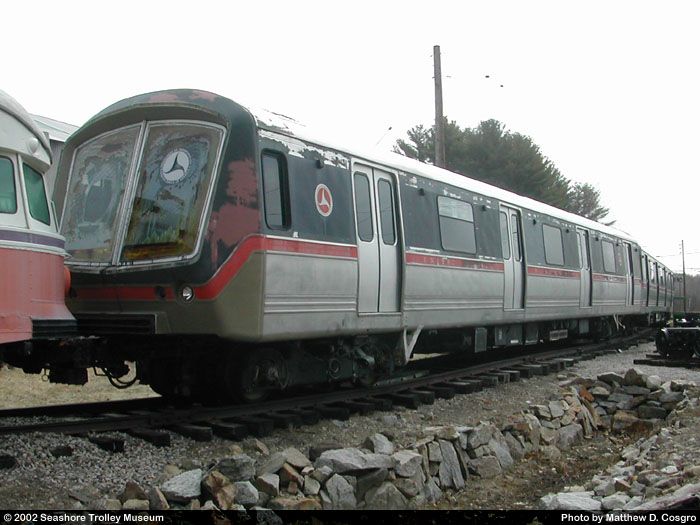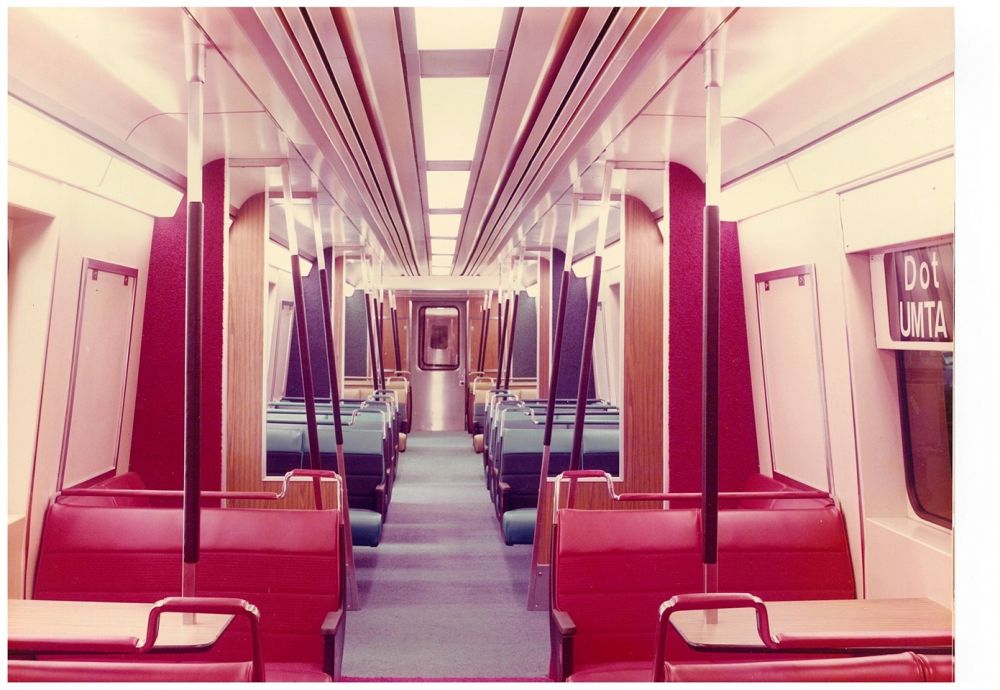
- Builder
- St. Louis Car Co.
- Description
- Experimental Testbed
- Secondary Use
- Experimental testing
- Type
- Rapid Transit Cars
- Year
- 1972
- Retired from Service
- 1989
- Acquired by the Museum
- 1989
- Sponsor/Manager
- None
U.S. Department of Transportation SOAC 2
From Washington D.C.
History
Although the PCC car had introduced a single design standard for surface cars in the United States, there was no standard for rapid transit cars. Car procurement was difficult because each rapid transit system sought customized designs. Moreover, in the early 1970s, urban rapid transit had a seriously shabby image. So, the United States Department of Transportation’s Urban Mass Transportation Administration (UMTA) decided to create a rapid transit train using the latest technology and demonstrate it on as many systems as possible. UMTA selected the Vertol Division of Boeing Corporation as systems manager. Two so-called State-of- the-Art (SOAC) cars were built in 1972 by St. Louis Car Company using the basic body shell design of the recently delivered fleet of R-44 subway cars for New York. (These were the last rail cars built by St. Louis Car.) The trucks were the standardized General Steel 70 model, used everywhere except New York. Garrett AiResearch supplied the solid state control equipment and motors, and various vendors were tapped for the latest items in their catalog. The SOAC cars could accelerate to 80 mph in 60 seconds. The cars were designed for reduced noise, a smooth ride and appealing design. SOAC car No. 1 had a low density interior with seats for 64 and a crush load of 220. SOAC No. 2 had a more Spartan, high density design seating 72 with a maximum capacity of 300.
UMTA tested the SOAC cars at the Transportation Test Center in Pueblo, CO. Then, between 1974 and 1976, the SOAC cars ran in demonstration service in five cities: New York (IND), Boston (Red Line), Philadelphia (Broad St.), Cleveland, and Chicago (Skokie Swift). Passengers and motormen liked them, but the SOAC cars were withdrawn from service. The U.S. DOT then used the cars for tests of improved hardware at the National Transportation Test Center in Pueblo, CO. Almost every rapid transit system constructed subsequently adopted the same basic design. Many innovations in the SOAC cars were later applied to the Boeing-Vertol Standard Light Rail Vehicles. (One of these SLRVs – Massachusetts Bay Transportation Authority No. 3424 – is now at Seashore.) UMTA planned a second tour to demonstrate AC propulsion equipment instead of the original DC motors. UMTA started to convert SOAC-2 to AC motors but then cancelled the program. After final tests at Pueblo in 1981, the Department of Transportation put the SOAC cars in storage.
Seashore sought to acquire the SOAC cars as representation of the Federal government’s activity in developing modern transit equipment and as representation of the revitalization of America’s mass transit industry. The U.S. DOT donated the SOAC cars to Seashore in 1989. U.S. Senator George Mitchell assisted in arranging free railroad transportation for the cars from Pueblo to Portland, ME. Cianbro Corp. provided free transportation on to the museum. At the time, these were the newest vehicles at Seashore. Unfortunately, the cars’ huge windshields have delaminated and must eventually be replaced.
Technical Information
- Seats: 72
- Brakes: WABCO Experimental
Trucks
- Number: 2
Weight and Dimensions
- Length: 74’ 9.00"
- Width: 9’ 9.00"
- Height: 12’ 2.00"
- Weight: 89000 lbs.
Additional Images

Matthew D. Cosgro in 2002

Elmer Konradi photo around 1982
© 1998 - 2025 New England Electric Railway Historical Society. All Rights Reserved.